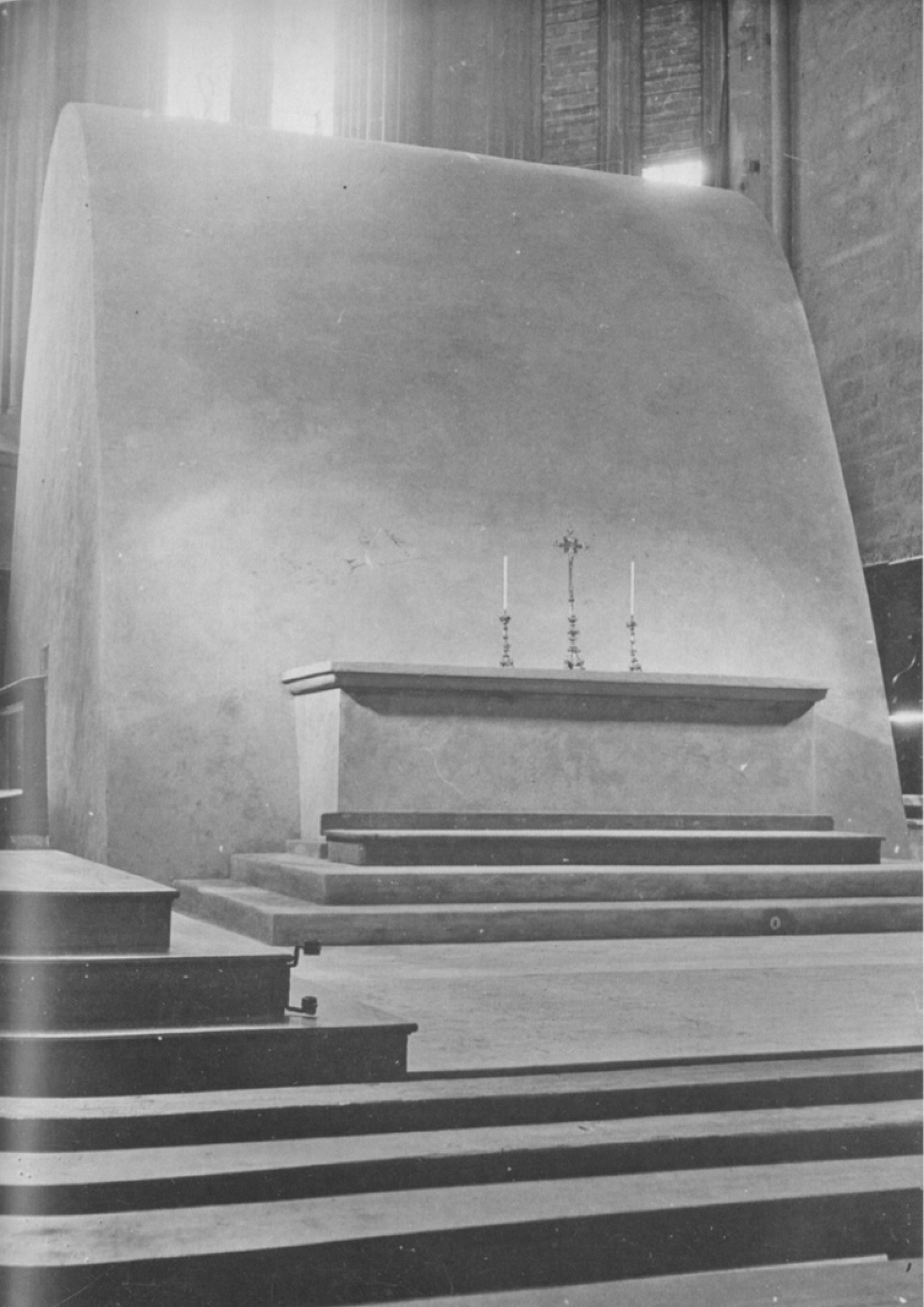KHI 2021+ Lecture Series
Lucia Allais:
The Protective Image

High altar in Arezzo Cathedral, as photographed and published in Direzione Generale per le Antichità e Belle Arti, La Protezione del patrimonio artistico nazionale dalle offense della guerra aerea, 1942
What do we see, when we contemplate a photograph of a hidden artwork? Decades before the artists Christo and Jeanne Claude began wrapping buildings with fabric, the monuments of Western Europe had already spent years, during World War I and World War II, being systematically hidden behind elaborate apparatuses of wood, sandbags, brick, and sometimes even concrete, and then being widely photographed in this armored state. This lecture explores the archives of these protective works, beginning with Paul Clemen in World War I, continuing with the architects of the Junta in the Spanish Civil War, following the League of Nations’ attempt to construct international norms in the 1930s, and culminating in the parallel protection projects of French, Italian, and German arts administrations between 1939 and 1945. The continuing legacy of this practice can be seen in imagery from the recent conflict in Syria. Far from rendering monuments invisible, these protective structures operate a striking auratic enhancement: a blanking out of detail, and an absorption of all ornament into abstract prismatic surfaces. Tracing the legal, technical, and regional debates that have surrounded these protective works for over a century reveals that, more than images of protection, these constitute a “protective image”, or modern-day apotropeia: an image that has an aesthetic power to repel danger.
Lucia Allais, Associate Professor at Columbia University, is an architectural historian whose work addresses architecture’s relation to internationalism, to technology, and to theories of time in the modern period. Her first book, Designs of Destruction: The Making of Monuments in the Twentieth Century (Chicago, 2018) describes how a new international definition of “the monument” emerged between the 1930s and the 1970s, as committees of art historians, architects, and archaeologists worked to protect buildings worldwide from the destructions of war, modernism, and modernization. Allais has also written about the global culture industry, the history of architectural knowledge, and contemporary design. She earned her BSE from Princeton, her M. Arch from Harvard, and her PhD from MIT, and she has received a number of grants and fellowships. Allais is a founding member of the Aggregate Architectural History Collaborative, and an editor of the journal Grey Room.
This talk is part of the KHI 2021+ Lecture Series, organized by the doctoral and postdoctoral fellows, in collaboration with scientific staff and senior scholars of the Institute. It is envisioned as a forum to reflect on the futures of Art History through conversations with innovative voices in the discipline, working in different areas but sharing methodological concerns.
17. Juni 2021, 15:00 Uhr
KHI 2021+ Lecture Series
The event takes place online.
Hinweis
Diese Veranstaltung wird durch Fotografien und/oder Videoaufnahmen dokumentiert. Falls es nicht Ihre Zustimmung findet, dass das Kunsthistorische Institut in Florenz Aufnahmen, auf denen Sie erkennbar abgebildet sein könnten, für die Veranstaltungsdokumentation und Öffentlichkeitsarbeit (z.B. Social Media) verwendet, bitten wir um eine entsprechende Rückmeldung.


